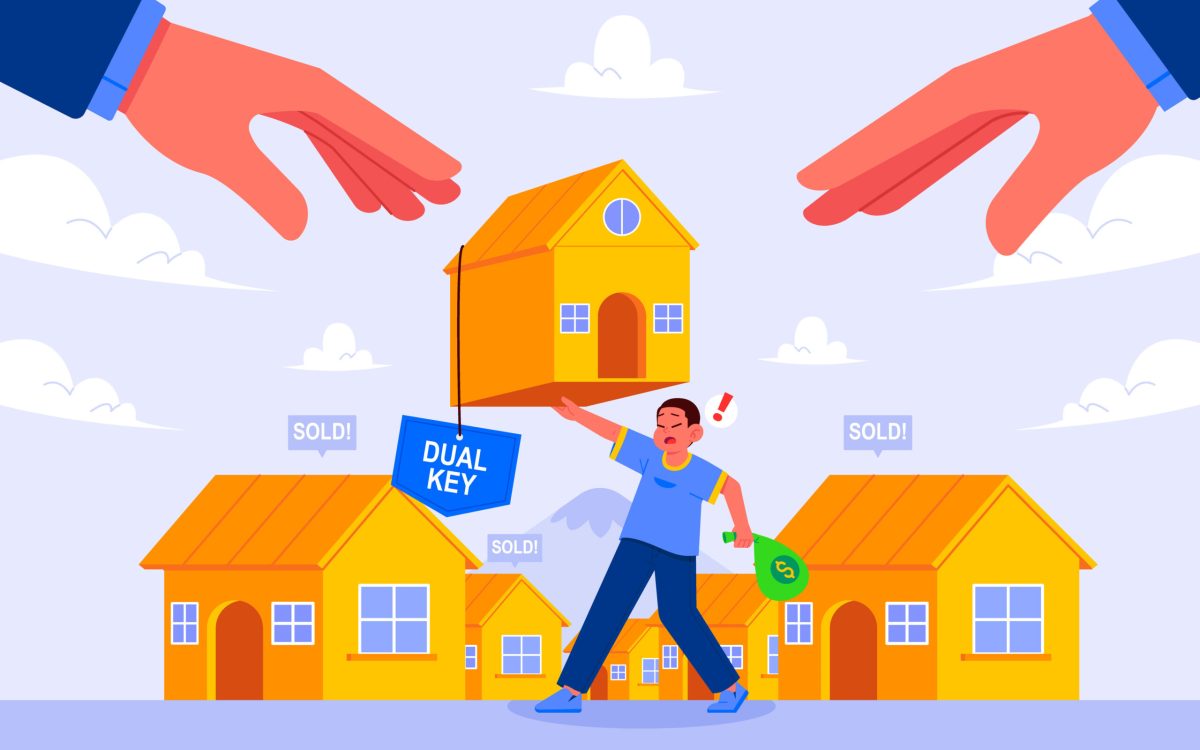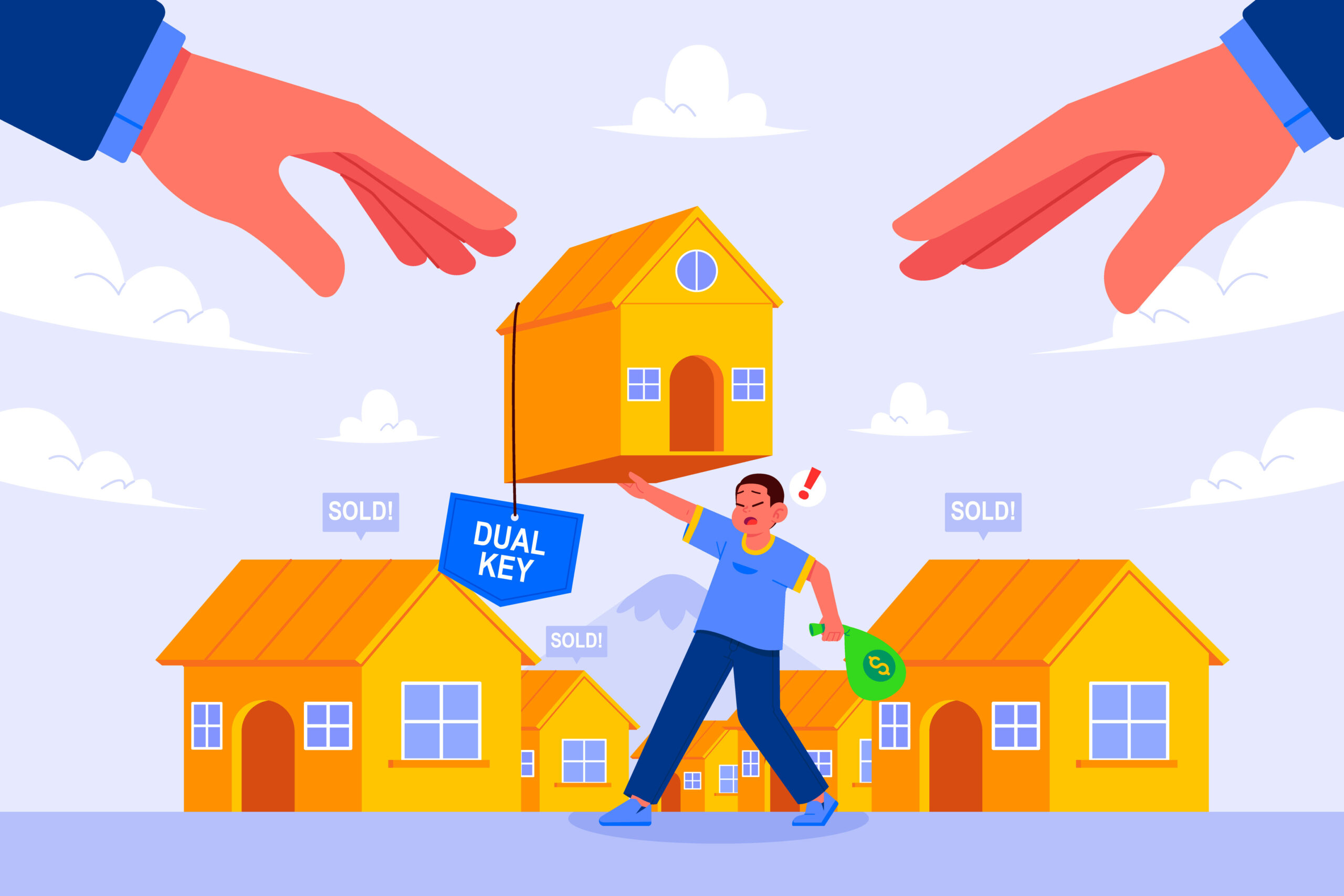Ever since it was introduced, the Additional Buyers Stamp Duty (ABSD) rate has never gone down in Singapore; and at the time I’m writing this, it’s at 20 per cent for Singapore citizens. So there’s no good way to invest in a second condo, unless you can decouple right? Uh…not quite. There is a workaround, since the property industry is very aware of the issues; and one solution lies in dual-key layouts.
What is a dual-key layout?
This is a concept that was first introduced in a condo project called Caspian, back in 2009 (this condo is still around, it’s at Lakeside Drive). The idea behind this unusual layout is to subdivide a single unit: you get a home with a common entrance and two doors (hence the term dual-key), and the unit would be divided into two independent halves.
Since Caspian, there have been a lot of innovations in this layout – some now have one sub-unit located upstairs and the other downstairs, and some enterprising home owners have even sub-divided their own units to create dual-key layouts.
So how exactly does this help with the ABSD?
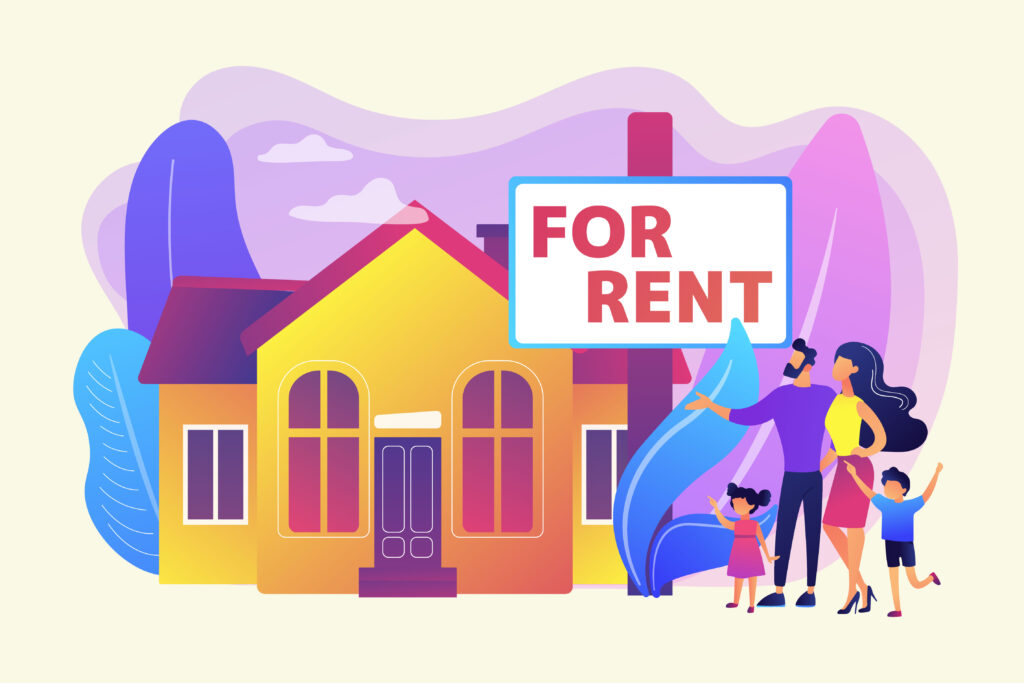
Let’s say you want to have a unit to rent out, or you want to live with extended family, but don’t want to buy two properties. This is where dual-key units come in: they allow a tenant and landlord to co-inhabit the same unit, with total privacy from each other; just as they’d allow, say, you and your in-laws to occupy the same unit, without actually getting into each other’s private space.
So instead of buying two condo units – on which the second would incur ABSD – you can just buy one, and incur zero ABSD. This also allows you to sidestep the issue of each spouse / partner having to take on a separate mortgage, which can be a hefty burden on single-digit millionaires.
Some notable condos that have dual-key units include:
- Caspian (the original grand-daddy of dual key units)
- Forret at Bukit Timah
- The M
- Whistler Grand
- Park Place Residences
- Gem Residences
- Parc Clematis
- High Park Residences
- Urban Vista
- Skies Miltonia
You also tend to find dual-key layouts in condos that are angled at being rental assets. Tre Residences and Uptown @ Farrer, for instance, have dual-key units. That’s because – even if the landlord decides not to live on the same property – a dual-key layout is more comfortable for unrelated tenants. Who doesn’t want total privacy from their roommate right?
There must be some kind of catch to this

There always is. Dual-key units do let you avoid the ABSD, but the layout carries a few potential drawbacks:
- Some living space is sacrificed for extra utility rooms
- Dual-key units tend to be a bit pricier, on a per square foot basis
- Tougher to resell
- Utility bills tend to go up
1. Some living space is sacrificed for extra utility rooms
The single biggest drawback of dual-key units is having to double up on utility rooms. You can’t have a single kitchen anymore, for example, because the other sub-unit needs its own; so this can result in one sub-unit having a kitchen, and another smaller one having a pantry. You also need at least two bathrooms, even if it’s just a two-bedder unit.
(Plus, building a dividing wall between the two sub-units is bound to take up space on its own).
The extra utility spaces tend to eat into the available square footage. So if you compare a regular 1,000 sq. ft. unit to a dual-key 1,000 sq. ft. unit, the regular layout tends to have more living space; even if they’re technically the same size.
2. Dual-key units tend to be a bit pricier, on a per square foot basis
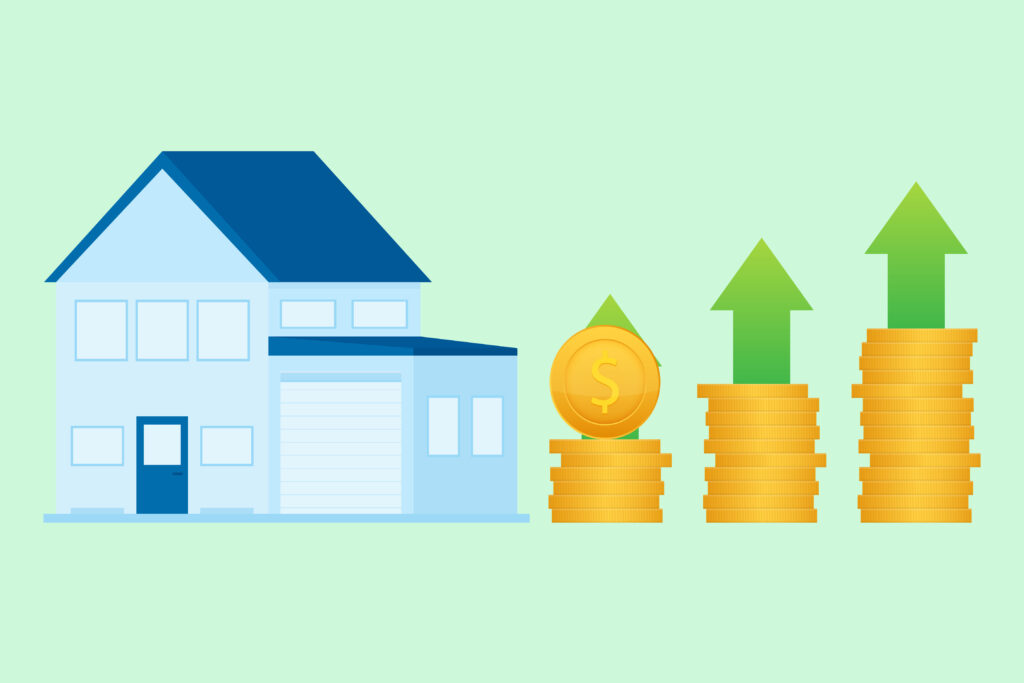
The general excuse for this is that the unit has more utility rooms (see above), which raises the cost. The real reason is that developers charge more because they can.
Seriously, dual-key layouts tend to attract premium pricing, and this has become an accepted industry norm. Unfortunately, there’s no way to tell you how much more exactly a dual-key will cost, as there’s a huge variance between projects. Suffice it to say there in general, you’ll pay more; perhaps as little as five per cent more, perhaps as much as 20 per cent more.
3. Tougher to resell
Most buyers in Singapore are HDB upgraders, looking to move into a single unit. These buyers, who make up the bulk of buyers you’ll meet, don’t need a dual-key unit; let alone one that costs more than a regular unit, and also has less living space.
When it comes time to sell, your dual-key unit is only going to be considered by extended family buyers, and investors. And I’ll assure you right now, it absolutely sucks to have to negotiate with another investor.
First, most of them can get early-bird discounts from new launches, so they don’t really feel a strong inclination to buy resale (unless, you know, you’re selling for really cheap). They’re very focused on the bottom line, and better educated on the real estate market; so they’re just all around tougher negotiators than the typical homebuyer.
So in general, I’d focus on the benefits of being able to rent out a sub-unit (or even both sub-units), and roll in that sweet, sweet, rental income. I’d be less enthusiastic about resale gains. Overall, this dual-key thing may work better for those who just want to sit back and collect rent for decades, or even till the end of their life.
4. Utility bills tend to go up
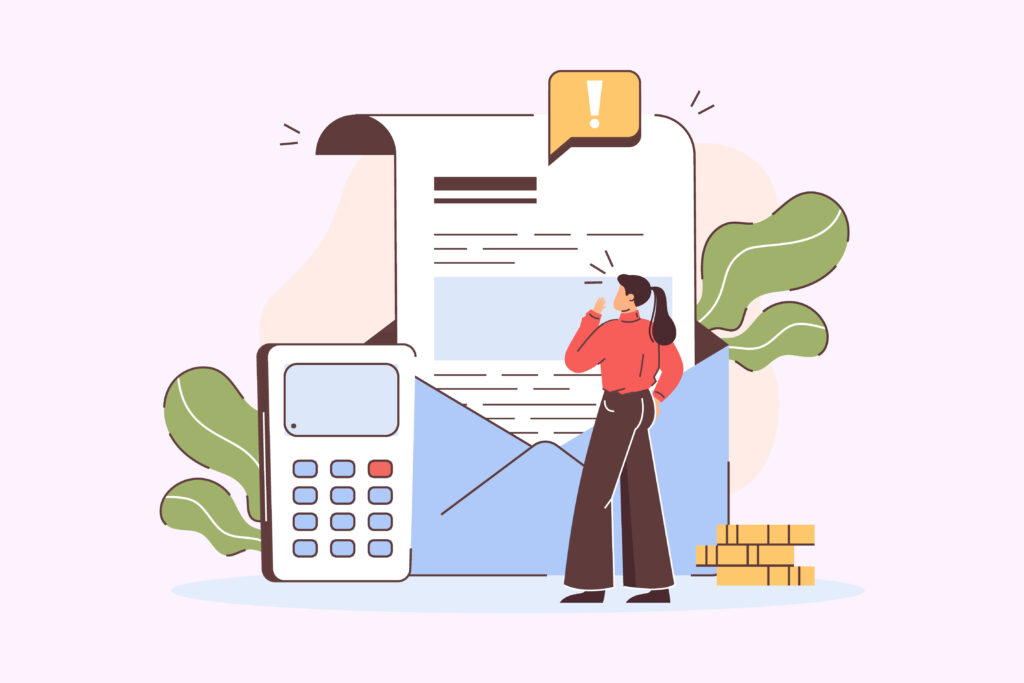
I probably don’t need to explain this too much right? Two bathrooms, two washing machines, two kitchens, two living rooms with separate TVs…there’s no way the utility bills are going to be the same as a regular layout, where all these things are shared.
Landlords can subtract tenant utility bills from their property tax though (if the tenants aren’t paying for them already), so it may not matter as much for them. For extended families, well, you all need to come to terms with how the utility bills are split. And hopefully there won’t be arguments about who the bigger power or water hog is.
For single-digit millionaires, it’s really worth considering this, instead of decoupling and using a “sell one, buy two” approach
Apart from the fact that property prices are still high (new launches average $2,100 psf as of January 2024), home loan interest rates are also high. We’ve gone from rates of around two per cent pre-Covid, to rates that are approaching four per cent today.
These aren’t the best conditions for a couple to take on two separate mortgages, just to avoid the ABSD. If your goal is rental income or rental yield, more so than capital gains, dual-key units may be the way to go right now.
For more tips and tricks on Singapore-based investments, follow us on Single Digit Millionaire.
